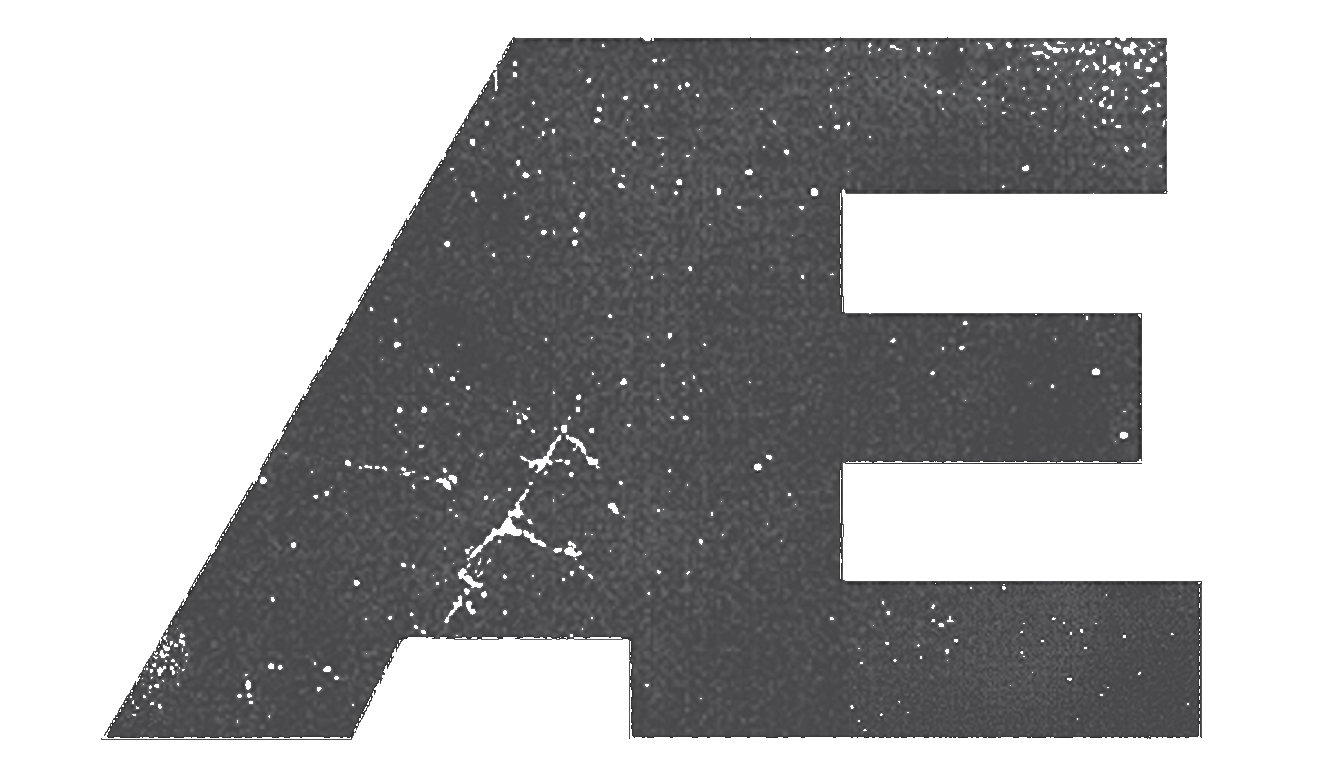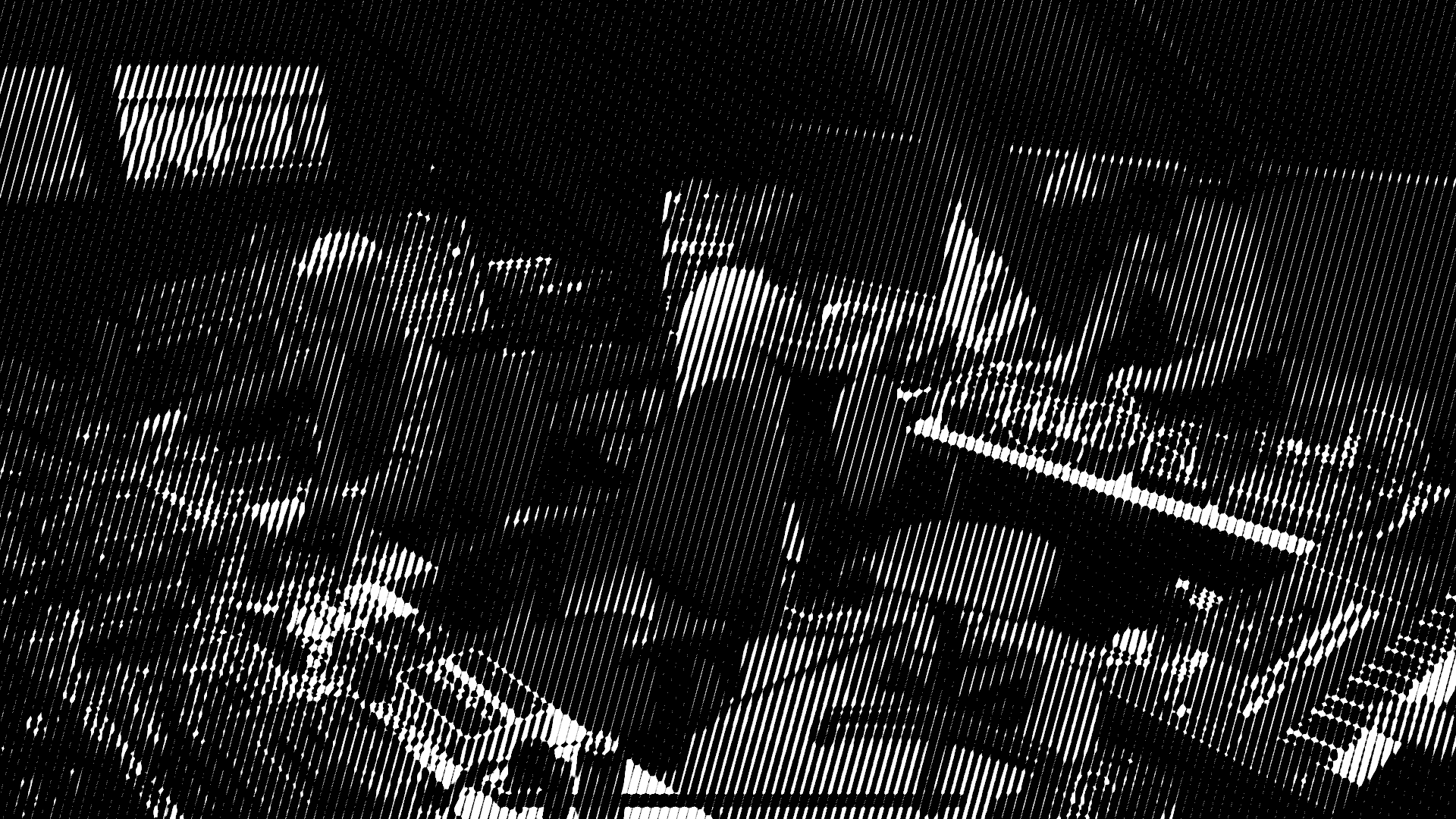This interview originally appeared in the now-defunct formant in 2015 and with the next sync session at Jaeger this Tuesday, we thought it was time to unarchive this classic interview and find some prescient ideas floating around.
Robin Crafoord greets me at the door of his spacious Oslo apartment with husky “hello,” the grainy quality of his voice a result of a cold bearing down on him. His perpetually anxious dog, Lola is barking in the background and only simmers when her owner offers the lofty comfort of his cradling arms. I let her sniff my hand as some naive habitual gesture of my good intentions before I enter the apartment, while Robin puts on a cup of tea. I set my things down at what I assume is the dinner table, where I find a drum machine, synthesiser and sequencer taking up a large part of the surface, and I’m not at all surprised to find these pieces in the context of an essential activity like eating. Robin Crafoord is best known as the Robin from Trulz & Robin, but the purpose of my visit is to find out more about a newly developed community music project called SYNC.
The project came to exist as a way of “getting to know people” in Oslo, a city that had become something of a stranger to Robin during his extensive absence in Barcelona. For Robin the only way to achieve this was “through music”, and the group dynamic of an impromptu jam session. “I just love jamming with people especially if you don’t know them that well.” It builds bridges in Robin’s experience, bridges that connect two isolated personalities through the common thread from a shared love of music. The first few SYNC events, which arrived in 2010, were an open call and a bit “chaotic” as diverse musicians joined in, invading the stage with all manner of instruments in what must have evoked something of a carnival atmosphere.
Over the years it’s existed, the project has been somewhat refined with the open call approach rejected for a smaller pre-determined group of musicians that changes for each event. “It’s important that new people will join in and that it grows” for Robin, who acts like a kind of conductor for the events as the only permanent fixture. The main objective of SYNC remains unchanged however from those first chaotic jam sessions. “The central idea to SYNC is to collect a network of musicians and become a place for musicians to meet.” But as the name suggests there is an important electronic component to the concept that creates the context for this main objective. It’s through the machines that these professional musicians, artists or even just hobbyists connect and sync up. Some might find the concept a little intimidating, but as far as Robin is concerned “ you can play one sound and it would be enough.”
For each event the selected group plays three improvised sessions, starting through ambient progressions, during which stage they get a feel for their position within the collective. “I always tell the guys to think that they are an instrument and that they can play a bass-line or a drum or an effect sound.” Robin encourages them to think as a part of a group and not in the sense of a producer that is putting an entire track together. Having never played as a group before things might start off a bit cluttered, and they use this ambient section of the night to find their perspective roles within the group and “start to get more sensitive” about what’s happening around them from the other musicians.
Very little is discussed beforehand and on the odd occasion where a discussion ensues, it’s usually something as universal as a key, even though it’s something Robin might not always adhere to. “I never know what key I’m in.” As the session progresses to find a groove through two other parts, the musicians invariably start picking up on the activity of their peers and start developing instinctive roles within the group dynamic. The role is adaptive and gives the musician the opportunity to explore the depths of his/her expressive creativity in the context of the group where it can be refined through the limitations imposed by the machine and the other musicians. All of this happens for Robin at a subconscious level and it’s in the true spirit of escaping into the music. He shares an anecdote with me from one of the last events, where after inspecting the recording he found a peculiar sound, and after checking with his musical comrades couldn’t find the source of the strange noise. “Everybody ‘s like ‘who is making the sound.’ Nobody really knows where that sound came from.“
These unexpected moments are… expected actually when you get a bunch of strangers together, but there is a certain level of control that is inherent with the machine that you’ll not really find in the played instrument. “And it won’t stop” interjects Robin about the machine when I raise this point. Robin tries to have some level of control from his mixing desk, with the pre-fade listen giving the opportunities to” fit in a lead with a bass-line somewhere.” It is however when the machines rely more on the human input that the process really gets interesting for Robin. “I want to try and have an element of something that is not in sync also every time. To exclude anything is just stupid.
“ The last SYNC featured a drum machine triggered by a live drummer, while before that Jan Martin Eiko was at the keys of Korg Polysix. It becomes clear the more I speak to Robin that SYNC is as much about the people as the machines. There’s almost something of a socialist ideal behind the whole project as people get together to express themselves through music and form bonds and friendships long after the event concludes. “I know some of the people have been in contact since, and that they have shared a million ideas about how they can work together and sync their machines and be creative.” It’s a very honest pursuit for the people involved and “nobody has ever asked for money” to be there, with a mere few beers the reward at the end of each session. “In Oslo nowadays everybody is so business minded. If I asked anybody to play for 1500 kroner, they would say no way.“ This is very significant if you consider some of the calibre of the musicians that play at SYNC and the amount of effort it takes to get this type of equipment to the venue. It’s rousing what Robin has achieved with this concept. He is absolutely inspired at the end of each event and always feels the need “to go into the studio immediately and try to repeat the session.”
We are interrupted suddenly by Vinny Villbass as he steps through the door. He is currently helping Robin babysit Lola. The DJ and producer will be joining Robin on stage for the next SYNC session with a TB-3, a Laptop and some field recordings he captured from Brooklyn recently. “It’s like ten hours of recording, so I wanted to play it in the background for the whole evening, really… really low. It would glue the whole evening together.” Robin will most likely swap out a synthesiser from his last session, but he tries to work with the same equipment every time, his SYNC set always standing in his hallway, ready to be used. The sessions also give him the opportunity to get to grips with a new piece of equipment, which he then tries to recreate in the studio environment with Trulz. He cites his Doepfer Dark Time sequencer as an example of how SYNC familiarises him with a new piece of kit. “I’ve been using it with Trulz at every live gig and I use it in every live session. It’s starting to become my instrument.”
Robin also hopes for these live sessions to eventually become a recording project. “I’ve been thinking about it since I’ve started doing it at Mir. Everybody’s thinking about it.” And in the spirit of the community that SYNC relies on, this too will take the form of a collective of sorts. “I’ve done loads of party concepts, but I’ve never felt the unity that we have with SYNC. Everybody is so eager to create something around it.” Robin’s only just started collecting these recordings with this new element of SYNC in mind and it’s incredibly exciting, sitting on the other side of the process witnessing it all take shape.
There’s something truly electrifying unfolding here and as Robin talks about incorporating video in the future it’s clear that the possibilities are endless. There’s even a remote chance that SYNC will look to travel outside of Norway and sync up with people from other countries. “It’s kind of challenging to do this, to go to another place where you don’t know them and have a jam session.” Making music through machines – which everybody can play regardless of their skill set – can perhaps be that bridge between consolidating a language barrier or a misunderstanding. It’s something of an hyperbolic utopian ideal, and we’ve gotten ahead of ourselves here, but at the next sync session this is exactly what will be happening on a more reserved scale when Robin meets Gyrid Nordal Kaldestad for the first time and they make music together. “Now it’s cool and it’s a SYNC where I don’t even know the person.”
In a recent interview with another artist, the artist mentioned how in collaboration, creativity is achieved when you find that place where you struggle to understand each other and that’s exactly where I find much of the appeal lies in this concept. With SYNC that struggle is present and the creative results are un-matched with anything you’ve ever heard before, making it completely unique from solitary jam sessions that form the basis of much electronic music today. It opens up the introverted cliché that dominates this music and where before an indulgent pastime was practised, now a community exists. SYNC comes at exactly the right time to dispel this tendency in electronic music and offers a gateway back to the group dynamic that existed way before the image of the one-man-band locked into his own world from behind a computer screen. It brings that sense of community back to a world that has lost touch with what’s happening around them as they get sucked into a synthetic world through a 7” telephone screen. SYNC offers something of a lifeline to a new era of electronic music, where the individualistic pursuit is once again thwarted for music in social spirit.
I leave Robin again to the machines that have not stopped blinking at the corner of the table. With his daughter put to bed and his dog somewhat calmer, I imagine it’s at this station where the Scandinavian DJ and producer will be spending most of his time tonight. It might be a lonely pursuit now in this context, but I imagine what will be on Robin’s mind all the time he’s at his machines, is the thought of the next SYNC and making music with new friends.
Words: Mischa Mathys

